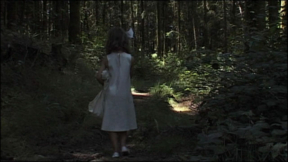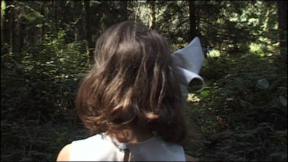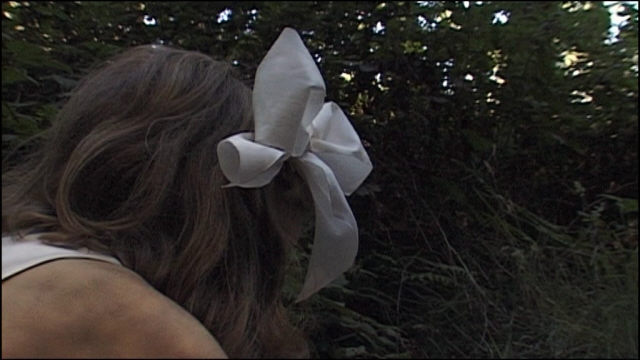
- 2006
- Video
- Inv. IM28
Vasco Araújo
Hereditas
Video, colour, no sound, loop, 12’14’’
This video is exceptional in Vasco Araújo’s work in that there is neither sound nor words, whether spoken or written. There is nothing, apart from total silence.
Filmed in Caramulo, a town in the mountains in Portugal’s inland region built in the last century as a health resort for tuberculosis patients and now, with the eradication of the disease, a landscape of abandoned buildings which have no function, Hereditas unfolds around a child, a young girl.
The beginning of the video shows the young girl in a forest whose lack of eucalyptus trees may make us think of more northerly regions (our knowledge of the history of Caramulo makes an allusion to Thomas Mann’s ‘Magic Mountain’ inevitable). She walks, alone, dressed in immaculate and timeless white, with an enormous bow. A large, theatrical bow, framing her blonde hair, an adornment which acts as a sign that we are about to witness something exceptional, something out of the ordinary, in a place beyond time. The beauty of the forest, the rays of sun filtering through the leaves of the trees, the clearing and the girl sitting scrabbling in the earth, uncovering something that she then carries in a cloth which she drags along the floor. A cloth that is too big for her slight body. The little girl leaves the forest and reaches the foot of an enormous flight of stairs which leads into a rather grand and obviously abandoned building (the former children’s sanatorium). She goes in and sets out along empty corridors, always alone, fearlessly so, approaching each door, whose handle she turns, one after another, until she arrives in a room where she deposits the contents of her cloth. We see that what she has been carrying and has diligently uncovered in the pine forest are bones, a well-guarded piece of treasure. Human bones. The skull on top of the pile of bones leaves no room for doubt.
The camera now moves in closer. The predominant colour is white, the old, dirty white of the tiles in the room and on the bench, the white of the bones, of the cloth that carried them, of the girl’s dress. In this private and secret chapel-like space for the bones, no one seems to see or hear the little girl playing with the bones, touching them, covering them and uncovering them, piling them up in an attempt to reconstruct the spinal column.
Hereditas is a work about childhood, solitude, pain, love, death and the desire for knowledge and understanding of the great enigmas and questions of the human condition.
Isabel Carlos
April 2013
| Type | Acquisition |
| Date | November 2007 |






